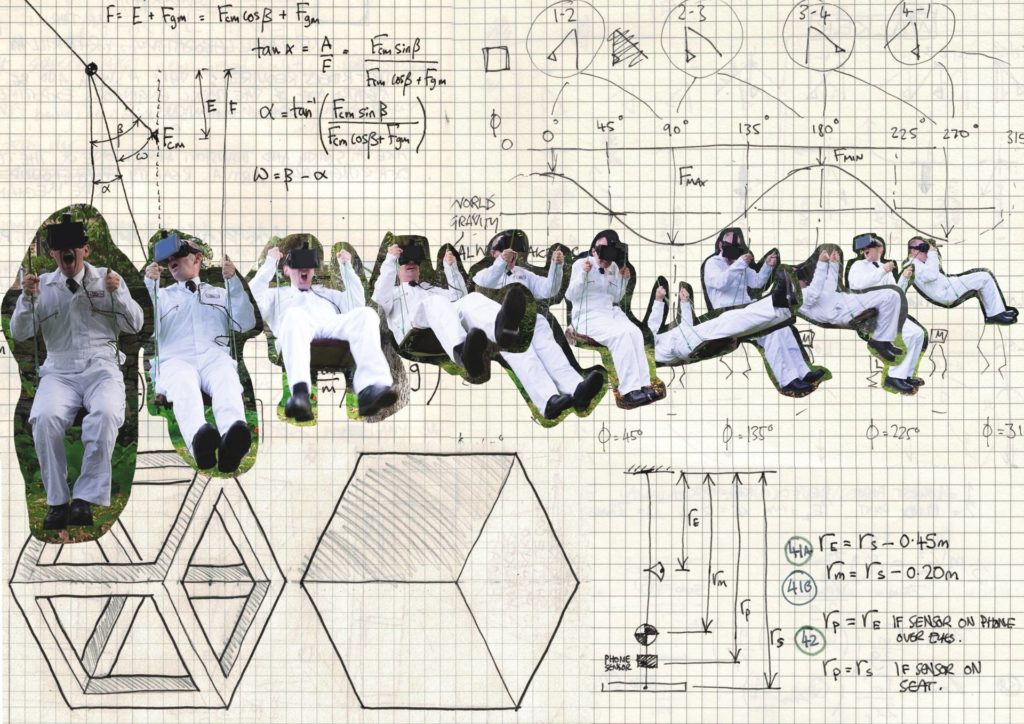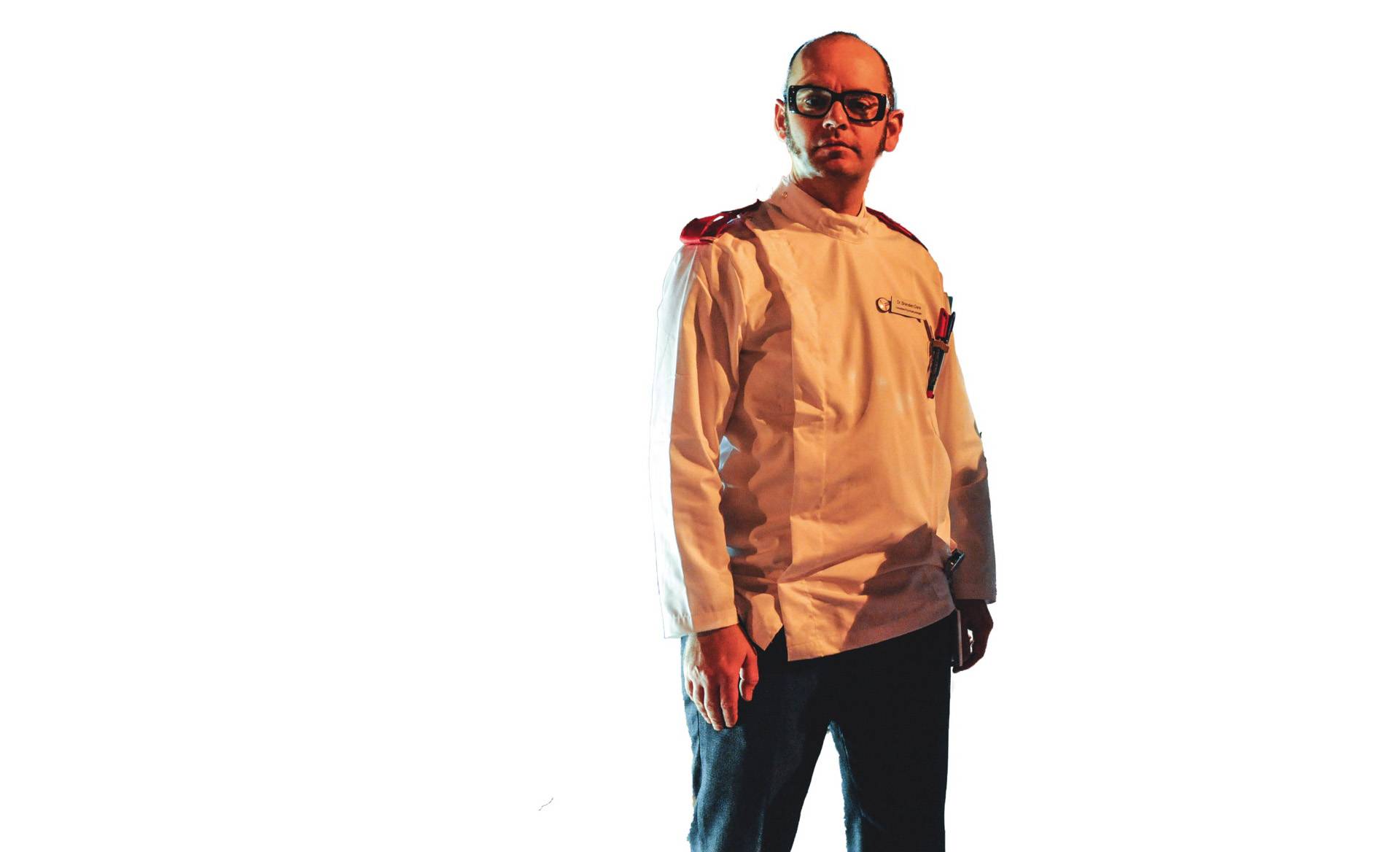The way I work: Brendan Walker
The engineer responsible for the stomach-dropping sensations you feel on Alton Towers’ roller-coasters says there’s a tension in his work between creating discomfort and entertainment.
When people hear I’m the world’s only thrill engineer, they usually respond: “Oh my god, I want that job.”
Admittedly, it’s a job title I created, but the collision of something so subjective as thrill and as objective as engineering practice perfectly describes what I do.
I research and understand physiological responses to the likes of rollercoasters and help design rides. I’ve advised theme parks such as Alton Towers and Thorpe Park on what gets punters’ blood pumping, and have created technology-inspired performance art for the Tate Modern. As founder and director of the Thrill Laboratory, a collective of scientists, technologists, artists and designers, I have a passion for creating thrilling experiences.
I studied aeronautical engineering at Imperial College London and worked for British Aerospace Military Aircraft, working on ejector seats. Even then, there was something about g-forces that interested me. I left to pursue design at the Royal College of Art, then started to make large mechanical installations for galleries. The way people were excited by these big machines fascinated me and I wanted to know more about how I could control their emotional engagement with the work I created.
So in 2003, I received government funding to look at how the emotion of thrill works. Inspired by the US criminologist Jack Katz, who studied “crimes of thrill” like shoplifting and joyriding, I spent a year interviewing people such as cross-dressers and those doing illegal activities like white water rafting in places they shouldn’t about their own illicit thrills, in an attempt to dissect what motivates them.
I found some general rules, which I published in a small booklet called The Taxonomy of Thrill in 2005, which I still use to design my own thrilling experiences. Drawing on my engineering background, I coined the “Walker thrill factor”, which links measurable physiological traits of arousal and pleasure to thrill. People report being thrilled when there’s a large and rapid increase in pleasure (associated with dopamine) and arousal (associated with adrenaline) together. You can quantify thrill by the amount of – and rate of – change in both combined together.
Even though I’ve helped design rides for Alton Towers, I was anti-theme parks and rollercoasters to begin with. To someone who’d been involved in creating DIY thrilling experiences, they felt like mass-market dumbing down. But then in 2005, the director of Tussauds Studios – which at the time owned big theme parks like Alton Towers and Thorpe Park – invited me for a meeting and ordered 13 copies of my book for his creative directors. I realised that designing a ride that appeals to 95 per cent of the population was a real art. My respect for the industry grew and I worked there for quite a few years looking at trends that would be horrifying and thrilling people in the future.
When Alton Towers commissioned me to help design the drop feature for TH13TEEN – the world’s first vertical freefall drop rollercoaster – in 2010, the question was posed to me: “How far do you need to be dropped vertically in the dark before you can create the sensation of thrill?” Because for every extra inch of steelwork, it would cost thousands of pounds more.

I researched this by going to the DVLA’s test laboratory data on car crashes – how long did it take a driver in a simulation to react to a woman with a pram stepping into the road and press the brake pedal? Suddenly freefalling in the dark is an alarming thing, and I wanted to know how long it would take for the mind to process that into the action of gripping the seat. Essentially: how long does the feeling of fear take before our instinct to act kicks in? It turns out it’s a third of a second and, using some basic physics, I calculated you needed a drop of just over five metres.
That ride’s feature was put in place and it’s been very popular. More recently, I’ve worked on the Wicker Man, the new wooden coaster for Alton Towers, playing on the idea that it would be more thrilling because our perception is that wooden coasters – which sway in the wind – are not as accurate as mechanical ones.
New rollercoasters come around in the UK rarely because they cost between £13-£20 million, so a lot of my work is in my studio making my own small-scale rides.
Novelty is a big part of creating a thrilling experience, so fairgrounds have historically been early adopters of new technology. The first place many people experienced electricity and lightbulbs was at a fairground, attached to a generator at the back of a steam locomotive. For some people, the spectacle and wonderment of that was amazing. VR is still in that ascendance stage. At trade shows, people queue to don a headset not knowing what they’re going to be taking part in. It’s akin to seeing people queueing outside a cinema and asking them “What are you in a line to see?” and them replying “I don’t know. I’m just so excited to be sitting in a cinema. Now the challenge for people like me is to produce content that controls and choreographs people’s emotional experience using this technology.
Some of the rides I’m proudest of are actually the least technological. Airphoria was based on a Korean air cargo plane that crashed in 1999 just outside Stansted Airport, near Epping Forest. At the turn of the 20th century, there had been early amusement parks located there. Something in that mixture of pleasure and disaster fascinated me. I recreated a cabin that the audience would sit in for a half-hour show. One by one, they’d get attached to a zip wire and thrown out of the back of a plane.
There’s always been that tension in my work between trying to make people feel uncomfortable and on the edge of something potentially traumatic, but it’s also presented as entertainment and something which they should be feeling pleasure from.
I’d classify adrenaline junkies as emotional cripples. They have to go to greater extremes to feel the same reward that maybe your grandma would by being given a surprise birthday party. Everybody can be thrilled to the same level – we just have to understand their personality types. Everybody is different and you need to take that into account when designing a ride.
As professor of creative industries at Middlesex University, I do a lot of work encouraging future generations, and hope some follow in my footsteps. Children regularly ask me: “What do I need to become a rollercoaster designer?” My message is yes, pursue the STEM subjects – science, technology, maths and engineering – but also in conjunction with arts. A lot of people I’ve met in the industry come from a theatrical background – there’s lighting, sound and an audience you have to engage for a period of time. They’ll work with hardware manufacturers to make the track.
Rather than saying I’m the only thrill engineer, one day I want to be able to say I was the first of many.

Leave a reply
Your email address will not be published.